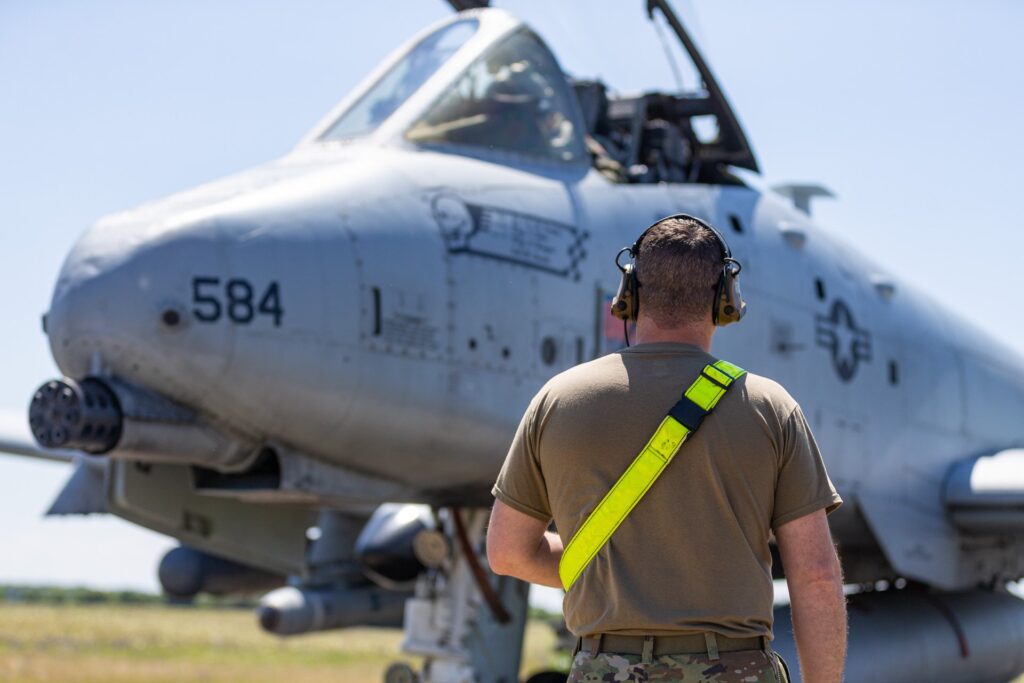The military alliance’s air exercise with dozens of powerful jets contrasts with the new air strike tactics used in the war in Ukraine, where drones have become an efficient and cheaper option.
(DW) Residents of some regions in Germany should not be surprised if they hear sonic boom these days. The Air Defender 23 military mega-maneuver, the largest air exercise in NATO history, is a demonstration of multinational air power planned as early as 2018 and coordinated by Germany, aimed at improving the joint defense of European territory and serving as a deterrent against possible aggressors like Russia.
But this resource-intensive war game, bringing together a number of expensive and sophisticated aircraft, and intended to successfully carry out complex airborne operations, stands in stark contrast to the real war taking place not far away.
In Ukraine, small, cheap drones have been equipped with grenades to be dropped on enemy forces, reminiscent of the old air raids when World War I pilots manually dropped explosives from their slow biplanes.
Other drones carry out suicide missions, which can be difficult to neutralize both on the ground and in the air. “This war looks the way it does because neither side can establish air superiority,” Torben Schütz, security and defense research associate at the think tank German Society for International Politics (DGAP), told DW.

Example of the war in Ukraine
To begin with, the Ukrainian Air Force is small and obsolete, and the country’s air defense depends on whatever weapons its partners are willing to supply. The Russian Air Force, on the other hand, is threatening on paper, but fails to make the most of its technical and numerical advantages. Russia, however, can still launch high-speed missiles from great distances. But both sides have resorted to solutions that may seem more improvised than strategic.
The war in Ukraine has caused Western strategists to wonder to what extent this anticipates the future of conflicts, and also how to avoid a scenario in which training and technology superiority is nullified by swarms of readily available drones, not to mention cyber attacks and electronic interference.
Man-Machine Power
Germany has been reluctant to add specially armed drones to its Armed Forces, and has an aging fleet of combat aircraft. Of the 100 billion euros in additional defense spending announced, more than 8 billion euros has been set aside for the purchase of up to 35 F-35 jets, fighters made in the United States capable of carrying nuclear weapons.
Proponents of traditional air power argue that drone technology cannot yet surpass human-piloted flight. Fighters are more powerful, can carry heavier payloads, and are less susceptible to cyber attacks and electronic jamming that can bring down a drone.
Next generation air combat operations could connect piloted and autonomous units. The Future Combat Air System, a Franco-German initiative sponsored by European aircraft manufacturer Airbus, aims to do just that.
“By the pace of technological advancement, it is prudent to avoid jumping to conclusions for our own (NATO) forces from past and current conflicts, such as in Ukraine and Syria and between Armenia and Azerbaijan,” Lt. Col. Torben Arnold tells DW.
In his view, the lessons learned “cannot be reproduced on a one-to-one basis” in other conflicts. He believes that even with the advent of artificial intelligence, drones will not make fighters obsolete. At least, “not yet.”

*** Translated by the DEFCONPress FYI Team ***
